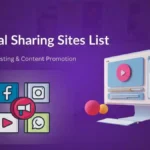Increasingly, calls are coming from phone numbers that start with 833. Companies started using these new 833 phone numbers in 2017.
They wanted more free number options in addition to the common 800 and 888 toll-free codes. A lot of businesses now use area code 833 numbers for their customer support lines, sales calls, or information hotlines.
However, some dishonest scammers have noticed these new 833 numbers too. They pretend the 833 numbers belong to their own fake companies or schemes.
This tricks people who think 833 means a legitimate business is calling them. Recently, scammers have been using made-up 833 numbers more and more to try and steal money or personal information.
So, how do you know if a call from an unfamiliar 833 number is real or a scam?
Big, well-known brands use 833 toll-free codes properly for services to help their customers. But crooks also use fake 833 numbers to do things like tax fraud, tech scams, or to get your sensitive details through sneaky questions.
We’ll explain how to check if an unknown 833 number seems fake, give real examples of how scammers trick people with 833 numbers, and suggest what to do to avoid being scammed.
While some businesses have good reasons for using new 833 numbers, you now need to be extra careful when getting calls from numbers starting with 833.
Spotting real versus fake calls can save you money, privacy, and trouble down the road.
The Legitimate Uses of Area Code 833

Companies have valid reasons for getting a phone number starting with 833. These new toll-free area code numbers allow them to give customers free support without being charged for the call. Some examples include
● Customer service hotlines—Big brands may set up 833 numbers so you can call with questions, complaints, or ask for help without paying call fees. This makes it easier for you to connect with their service team.
● Sales calls—Stores may have 833 numbers for their telephone ordering and sales teams. So you can ring up their sales office to place orders without collecting call charges.
● Information numbers—Companies use 833 toll-free numbers for their info lines about things like store hours, account guidance, how their products work, and more. This helps get info at no cost.
● Routing to multiple offices—833 provides companies with one number that can then route to their different locations nationwide. This lets them answer calls locally while clients just dial one toll-free 833 number they know.
Examples of Well-known Companies Using 833 Numbers
Here are some examples of well-known, legitimate companies using 833 numbers:
Major banks and insurance companies now use 833 codes a lot. For example, Capital One has an 833 number for its auto finance services team and claims department.
Big health insurers like Cigna offer 833 numbers to connect new customers with agents or check coverage details.
Big-name retail chains also utilise these. Walmart provides shoppers with an 833 customer service hotline for store feedback or online order issues.
Amazon has an 833 number that Prime members can call with account questions or returns help without fees.
For technology brands and telecom/cable providers, 833 can route nationwide. Microsoft has an 833 customer support line to help globally with Surface or Windows 11 installation problems.
Top internet companies like Spectrum and Verizon publish 833 codes for subscribers to call regarding WiFi drops, speed concerns, or billing questions with no toll charges.
So major legitimate brands spanning banking, insurance, retail shopping, software/hardware tech, and connectivity give out new 833 numbers so existing and prospective customers have easy, toll-free ways to reach them for purchases or service assistance.
As more companies adopt this area code, it builds consumer recognition and trust when seeing an unknown 833 call come through.
Risk of Scams Involving 833 Numbers

Unfortunately, as more real companies use these new 833 toll-free codes, scammers also take advantage by faking or “spoofing” 833 numbers to appear credible.
They use sneaky social engineering and cold calling to exploit people’s trust in 833’s legitimacy.
For example, crooks fake call IDs to show an 833 number supposedly from the “IRS” threatening legal action if you don’t pay fake tax bills.
Or they pretend an 833 number is Amazon customer service, warning of “suspicious activity” and urging account password resets.
Other examples include hijacked 833 numbers that route to tech support scammers impersonating Microsoft or Apple, pressuring for remote computer access.
And increasingly, online purchase text/email links bring users to phoney sites with 833 customer service lines to “assist” with fake extra fees.
Also read: 11 Best Dialer Apps for Android and iPhone
While 800/888 codes have long been spoofed, these new 833 scams add to risks because far fewer consumers remain alert to fraud associated with this area code. Scammers bank on the familiarity gap.
How to Identify and Avoid 833 Phone Scams?
● Research the business name given—Google them and check BBB reviews for legitimacy
● Check online scam number databases to see if the 833 code is flagged for fraud
● Ask detailed questions—scammers may use vague responses or eagerness to avoid answering
Best Practices to Dodge 833 Scams
● Don’t answer unknown 833 calls—let them leave a VM, research the callback number
● Never provide personal info like SSN or account numbers over the phone
● Hang up immediately if pressured, threatened, or asked for sensitive details
Options to Block Suspicious 833 Calls
● Use network provider call screening tools to detect likely scammers
● Download reputable robocall-blocking apps to stop spoofed spam
● Ask providers to trace nuisance 833 callers back to the source
● Report scammy 833 numbers to authorities like the FCC/FTC to warn others
Conclusion
We hope this article has helped you better understand the new 833 toll-free phone numbers you might be seeing more of.
Many real, major companies are starting to use these 833 area codes to help customers call them without extra charges.
Their goal is to give you good ways to ask for support or shopping help more easily. But 833 also comes with risks because sneaky scammers pretend their fake companies or services are on these 833 numbers.
The good news is that now you can tell real versus fake 833 callers apart better. Now that you know why trusted big brands like banks and stores use 833 numbers to help customers, it gets easier to spot the bad guys just trying to fool you.
Use what we taught you to double-check the business calling an unknown 833 code, ask lots of tough questions, and hang up and report scammy-acting calls to regulators to warn others.
The most important things are refusing to rush into giving information without research, and listening to your gut feelings if someone seems suspicious with 833 or any surprise calls nowadays.
You may also read:










